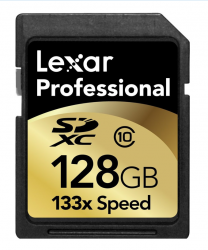 There I was, sitting at my computer sifting through the day’s deals on consumer electronics. I came upon Woot.com‘s deal for the day: a 64GB SDXC card for only $49.
There I was, sitting at my computer sifting through the day’s deals on consumer electronics. I came upon Woot.com‘s deal for the day: a 64GB SDXC card for only $49.
I was extremely tempted to go for it. 64GB in one small package was enticing, and I would no longer have to carry around so many memory cards and keep switching them out all time while on vacation taking photos.
However, I got to thinking: memory cards fail. They just do. There’s no 100% guarantee that a memory card will never burn up. That’s why we back up our computers, tablets and smartphones, and why we (should) have an emergency fund available in case our vehicle’s break down or a large home appliance needs repair.
Since you can’t really back up a memory card when you’re out in the field shooting photos and video, how do you protect yourself against bad luck? Well, there’s obviously no way to fully protect your memory card data if you can’t back it up, but there’s still a way to lessen the disaster level when a memory card takes the plunge.
Instead of getting just one high-capacity memory card and risk losing all of your photos, have multiple low-capacity cards. That way, if one craps out, you’ll still have a majority of your photos that are safe, instead of having all of them go down the drain at once.
This isn’t only a good practice for casual photo snappers, but it’s even more important for professional photographers who are getting paid big bucks to take those photos that are stored on those precious memory cards. They literally can’t afford to lose photos, and I know most photographers are constantly upgrading their cards to a larger capacity to lessen their memory card footprint. However, I can only suggest that anyone who takes photos or shoots video carry around multiple low-capacity cards instead. It’ll save your butt in the end when bad luck strikes.

Leave a Reply
You must be logged in to post a comment.